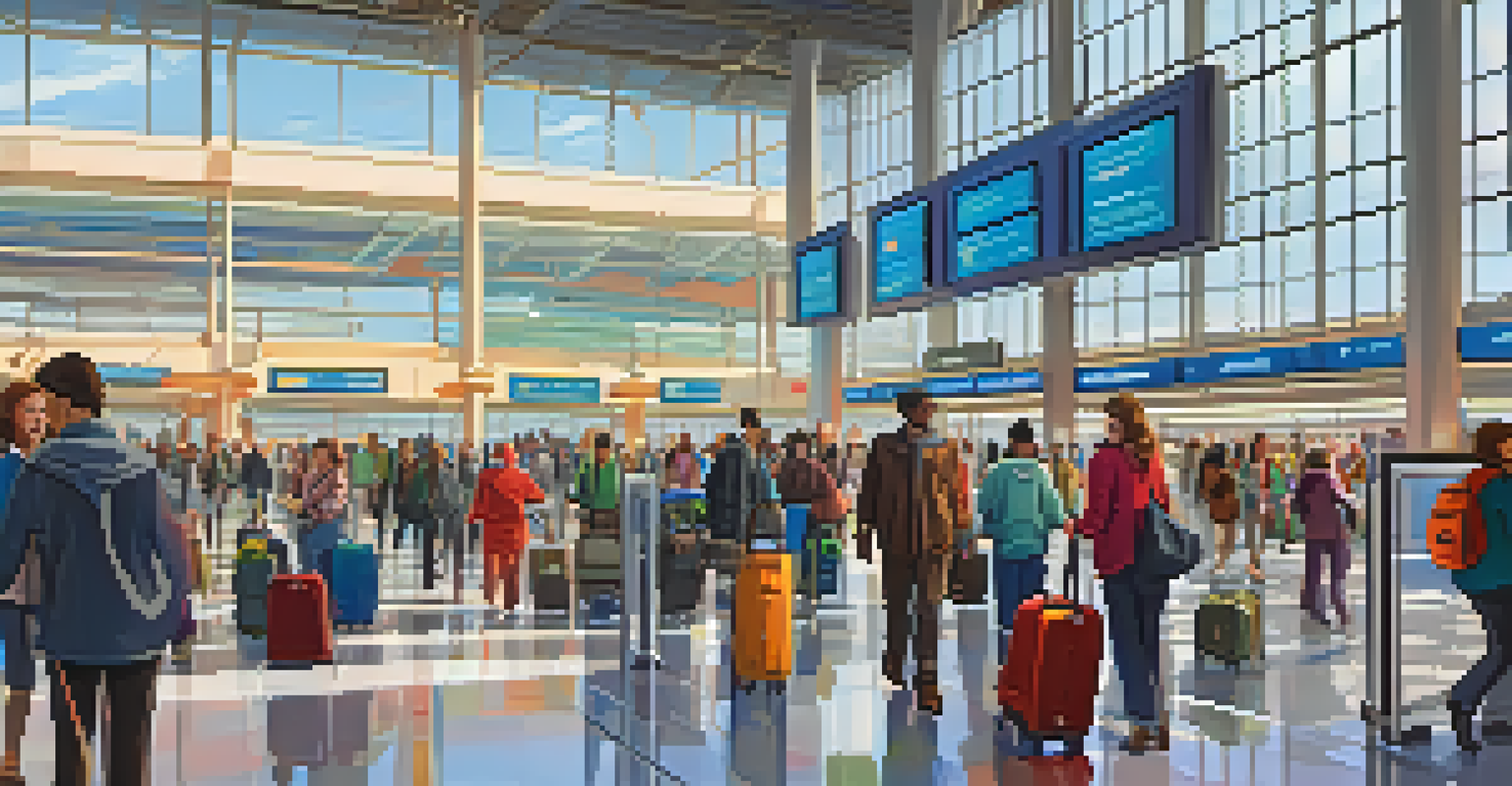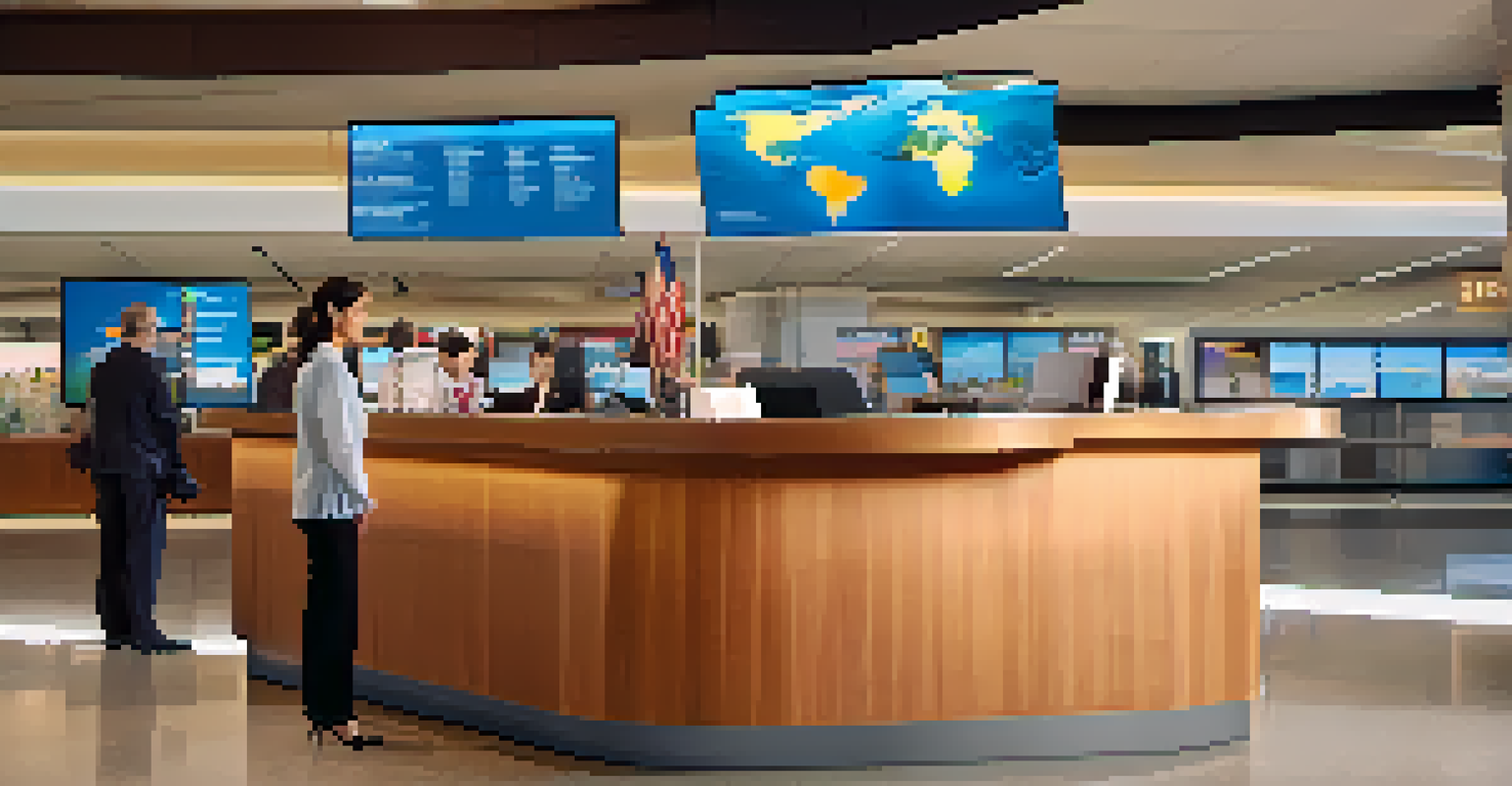How to Find Your Gate Quickly in Large Airports

Understand Airport Layouts and Signage
Airports can feel like labyrinths with their sprawling terminals and endless hallways. Familiarizing yourself with the layout can save you a lot of time and hassle. Most airports have maps available online or on their apps, which can guide you through the maze before you even arrive.
Traveling – it leaves you speechless, then turns you into a storyteller.
Upon entering the airport, look for prominent signs that indicate directions to gates, baggage claim, and other facilities. These signs are usually color-coded and utilize large fonts to ensure visibility. If you're ever unsure about where to go, don’t hesitate to ask airport staff for assistance.
Additionally, pay attention to the digital screens displaying flight information. They provide real-time updates on gate assignments, which can change frequently. Staying aware of these changes can help you avoid unnecessary sprinting through the terminal.
Use Airport Apps for Real-Time Updates
One of the best tools at your disposal is your smartphone. Most major airports have their own apps that not only provide maps but also real-time notifications about gate changes and boarding times. Downloading these apps before your trip can be a game changer.

These apps often include features like walking directions to your gate, estimated walking times, and even alerts for when your flight is boarding. This means you can plan your time in the airport more effectively.
Master Airport Layouts
Understanding airport layouts and signage can significantly reduce travel stress and save time.
In addition to airport-specific apps, consider using flight tracking apps that can provide updates on your flight status and gate changes. This extra layer of information can help you navigate the airport more efficiently.
Follow the Flow of Passenger Traffic
When you arrive at the airport, observe the flow of passenger traffic. Often, streams of travelers will lead you directly to the gates. If you see a lot of people moving in one direction, it’s likely they are heading to a popular flight or a central hub within the terminal.
The journey not the arrival matters.
This can be particularly helpful in large airports where multiple gates are clustered together. By following the crowd, you can often avoid the confusion of looking at maps or signs. Just remember to double-check your gate number, as it can change unexpectedly.
Another tip is to look for groups of travelers who appear to be in the same situation as you—those with similar boarding times. They can serve as informal guides, leading you in the right direction while easing any worries you might have.
Ask for Help When You Need It
Don’t underestimate the value of asking for help. If you’re feeling lost or pressed for time, airport staff are trained to assist travelers. Approaching a uniformed employee can save you precious minutes and reduce stress.
Many airports also have information desks that can provide detailed directions, maps, and even recommendations for the quickest routes to your gate. Don’t hesitate to utilize these resources; they are there to make your travel experience smoother.
Use Tech for Real-Time Info
Airport apps and flight tracking tools provide essential real-time updates for a smoother travel experience.
Additionally, fellow travelers can be a great source of information. If you see someone who looks like they know where they’re going, a quick question can point you in the right direction. Everyone’s in the same boat, so most people are happy to help.
Plan for Security and Boarding Times
Part of finding your gate quickly is planning your time wisely, especially when it comes to security checks. Arrive at the airport early to give yourself enough time to get through security without rushing. This is crucial, as lines can be unpredictable.
Additionally, keep an eye on your boarding time. It’s typically announced well in advance, giving you a window to make sure you’re at your gate on time. Remember that boarding usually begins about 30-45 minutes before departure, so be in the vicinity of your gate well before then.
By allowing ample time for security and boarding, you can navigate the airport more calmly and efficiently, alleviating any last-minute stress.
Familiarize Yourself with Airport Amenities
Large airports often have a variety of amenities, from restaurants to lounges, that can be helpful while navigating the space. Knowing where these amenities are located can save you time and enhance your travel experience. For instance, if you need to grab a quick bite, knowing the layout can help you find food options that are close to your gate.
Some airports even have designated areas for business travelers or families, which can provide a quieter space to wait for your flight. Familiarizing yourself with these amenities can make your layover less stressful.
Stay Calm and Seek Help
Maintaining a calm demeanor and asking for assistance when needed can improve your navigation through busy airports.
Moreover, if you have a long layover, knowing where to find comfortable seating or charging stations can help you recharge both your devices and yourself. Taking a moment to explore airport amenities can be a worthwhile investment of your time.
Stay Calm and Enjoy the Journey
Finally, remember that travel often comes with unexpected twists. Staying calm can help you think more clearly and make better decisions while navigating the airport. If you find yourself feeling rushed, take a deep breath and reassess your situation.
Embrace the adventure of travel, including the hustle and bustle of an airport. Instead of viewing it as a chore, see it as part of the journey that brings you closer to your destination. Engaging with your surroundings, even if just for a moment, can make the experience more enjoyable.

By maintaining a positive attitude and utilizing the tips mentioned, you’ll find that navigating large airports becomes not just manageable but also a seamless part of your travel experience.